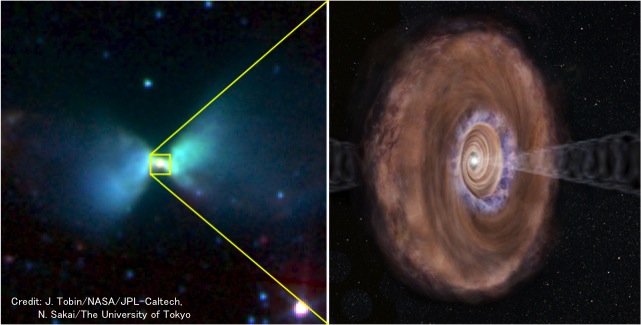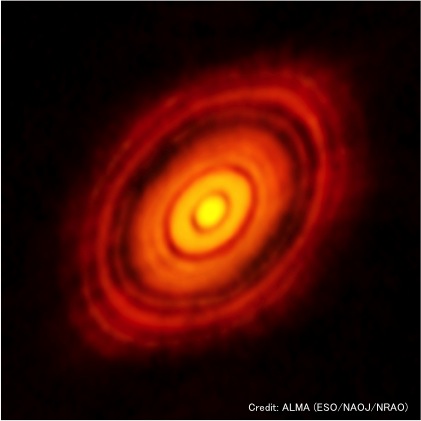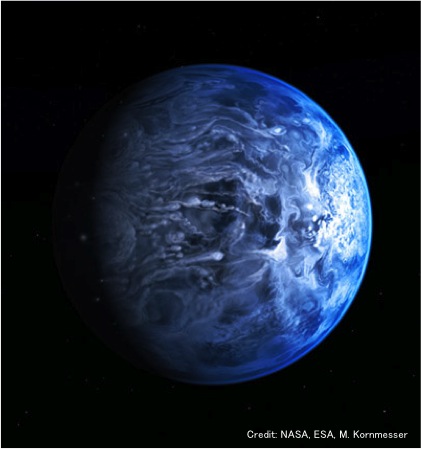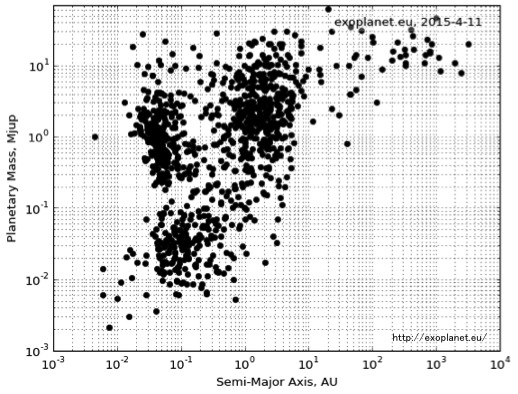- Scientific Rationale:
- 覧覧覧覧覧覧覧覧覧覧覧覧覧覧覧覧覧覧覧覧覧覧覧覧覧覧覧覧覧覧覧
- Ever since the first discovery of an
extrasolar planet orbiting around a Sun-like star in 1995, more than
1900 exoplanets (+ about 4000 candidates) have been observed so far. A
number of ongoing and future surveys do and will keep increasing the
population of observed exoplanets. In addition, the advent of ALMA with
significantly upgraded capabilities has recently enabled the
unprecedented high
resolution observations at (sub)mm wavelengths. For instance, the
long-baseline science verification campaign reveals multiple gaps in a
circumstellar disk around HL Tau, a young
(< Myrs) YSO, which may be a signature of planet formation. These
revolutionary observations are currently triggering the rapid progress
on the understanding of the formation and evolution of planets, which
may occasionally require paradigm shifts. It is fascinating that planet
formation can serve as a fundamental platform to unite these
observations and related sciences.
Aims and Scopes:覧覧覧覧覧覧覧覧覧覧覧覧覧覧覧覧覧覧覧覧覧覧覧覧覧覧覧覧覧覧覧
In a golden era of planetary sciences, it would be of essential importance to
(1) examine both theoretically and observationally the current
understanding of how planetary systems are born out of their natal
circumstellar disks and of how the systems evolve with time,
(2) summarize unresolved issues and open questions, and
(3) attempt to develop new ideas/visions to derive a better understanding of planet formation.
This workshop will be designed to cover the above points.
Specifically, this workshop will stimulate the following activities;
- review the current status of both theory and observations
- discuss the latest results of both theoretical and observational work
- summarize key questions that will/should be addressed in the near future
- trigger new collaborative work among theorists and observers
- enhance interactions between theorists and observers
- encourage involvement of young people including postdocs and students
- provide young students with plenty of chance to interact both with
active researchers in the world and with key scientists in Japan
#planetstokyo15 on Twitter
Schedule of the meeting
覧覧覧覧覧覧覧覧覧覧覧覧覧覧覧覧覧覧覧覧覧覧覧覧覧覧覧覧覧覧覧
Sunday, May 31, Day 0: Welcome party
Monday, June 1, Day 1: Current view of planet formation
Aim: to make sure that everyone is on the same page, and to pose key questions -
is our understanding of star and planet formation right??
- disk formation in the context of star formation
- statistical properties of exoplanets
- ALMA observation of HL Tau
Tuesday, June 2, Day 2: Formation and evolution of circumstellar disks
Aim: to make a connection between Classes I and II
- disk formation in the context of star formation
- properties of protoplanetary disks (dust/gas, chemistry, asymmetry etc)
- evolution of protoplanetary disks (full disks to transition disks, dust traps etc)
Wednesday, June 3, Day 3: Formation and evolution of planets
Aim: to make a connection between disks and planets and between formation and evolution of planets
- growth of dust grains/formation of planetesimals
- planet formation (CA vs GI, migration)
- evolution of planets (planetary dynamics, atmospheres)
Thursday, June 4, Day 4: Toward the future
Aim: to summarize the future missions and key questions that can be answered in the near future
- the future mission
- Astrobiology
4D2U theater
Banquet
Invited speakers
覧覧覧覧覧覧覧覧覧覧覧覧覧覧覧覧覧覧覧覧覧覧覧覧覧覧覧覧覧覧覧
Vardan Adibekyan (University of Porto, Portugal)
Ruobing Dong (UC, Berkeley, USA)
Akihiko Fukui (NAOJ, Japan)
Eiichiro Kokubo (NAOJ, Japan)
Nobuhiko Kusakabe (NAOJ, Japan)
Zhi-Yun Li (University of Virginia, USA)
Wladimir Lyra (JPL/Caltech, USA)
Eric Lopez (Royal Observatory, UK)
Sourav Chatterjee (Northwestern, USA)
Shantanu Basu (University of Western Ontario, Canada)
Masahiro Machida (Kyushu, Japan)
Hideko Nomura (Titech, Japan)
Laura Perez (NRAO, USA)
Nami Sakai (Riken, Japan)
Motohide Tamura (NAOJ, Japan)
Norio Narita (NAOJ, Japan)
Teruyuki Hirano (Titech, Japan)
Eiji Akiyama (NAOJ, Japan)
Session chairs/Discussion leaders
覧覧覧覧覧覧覧覧覧覧覧覧覧覧覧覧覧覧覧覧覧覧覧覧覧覧覧覧覧覧覧
Yuri Aikawa (Tsukuba, Japan)
Shigeru Ida (ELSI, Japan)
Shu-ichiro Inutsuka (Nagoya, Japan)
Kohji Tomisaka (NAOJ, Japan)







